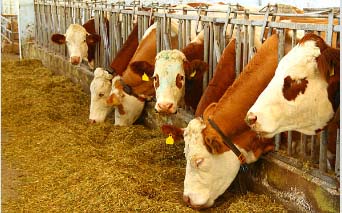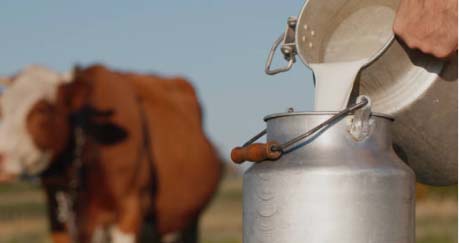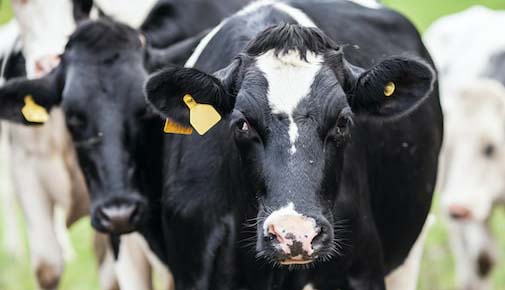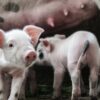How to successfully start a dairy farming business in Uganda. (2023)
Dairy farming is the rearing of dairy cattle for milk as the main by product. Just that. If you’ve been so hungry for knowledge on how to start a dairy farming business, here you are. At the right place. This article shall quench your thirst for knowledge concerning diary. If you aren’t about diary but cattle, read on as we shall tackle a lot of facts that cut across cattle keeping as a whole. If you are planning to start, Iam happy for you. With this article, you’ll have information that I didn’t have when starting. Hence a good start and pretty better chances of success. So let’s move.
I’ll start off at a point where you all know what dairy farming is as it’s discussed above. Then why dairy farming? The reasons are many and I guess by the time you are searching for information on how to start a dairy farm, you have Some at the back of your mind. But then ill point out some here for your cross check. There some you may not know.
- The profits. Think about grass for feed and a reward of milk and meat.
- Ready market for milk and it’s by products countrywide.
- The Industry does not depend on rainfall. If you plan well, you can have hay to feed your cattle even when there is no rain. Isn’t that empowering.
- Stable milk prices hence assurance of your profits
- The demand for milk and its products is always strong. Both vegetarians and non-vegetarians drink milk. More still, it’s the main food for babies.
- Dairy farming is the only agricultural industry where income is generated on a monthly basis. Other farming ventures have two seasons a year, but you as a dairy farmer, you are exceptional.
Those are some of the reasons you should look into dairy farming.
Is dairy farming profitable?
The short answer is ‘super profitable”. I’ll further answer this question in a simple way. A Holstein Friesian produces 25- 30 liters of milk per day. Feeding on grass preferably cultivated. Factor in the operational costs of 0.35% and get the difference. That’s your ideal profit. It shall deviate from that a little. Guess you are answered.
Who is this business right for?
The best answer to this is everybody. But there is something tricky with animals. Use this to validate yourself if this business is right for you or not? Animals need care and love. Let’s not look at the option 1 of exploiting them. They too need good care and this is very important in dairy farming. If you can offer this, then you are the right person for this. Do you have that deep feeling/ love for the animal? If you do, then there shall be no instance you’ll fail. If you don’t, you’ll struggle. Nevertheless, you can develop it given the fact that you love money and they provide just that.
How to start a dairy farming business.

Now is the right time to start a dairy farming business. It’s not late and it’s also not early but right. Let’s get over how to start a dairy farming business.
Plan your business.
Think about how you’ll organize and start off your business chronologically and most importantly if it’s worthy especially in the area you are going to put it. Is the climate favorable as animals especially dairy cattle may not thrive in some climate. You can check out these with your veterinary personnel. You need to do some research about things of the sort.
Some key aspects to deal with while planning your dairy farming business are;
- Executive summary: An executive summary should contain a brief introduction and summary of your entire dairy farming business plan.
- Business description: This is a clear description of where your business will be located, the products you will sell, and who your target customers are, your projected growth, your partners in business, the different opportunities your business offers, and more.
- Business goals and objectives including production strategies: what do you want to achieve and how do you plan to achieve it?
- Market analysis: know your competitors, their strength, and weaknesses. This helps you exploit their weaknesses to your advantage.
- Organization and management structure: how does workflow through your business with the main goal of achieving the business’s goals and objectives
- Sales strategies: sales strategies are plans for promoting and selling your product or service to buyers in a unique way from those of your competitors. This can help you can make more sales
- Funding and financial projections and mores others: You want to start your business. Where are you going to get funds to start off your business? How much do you expect to earn from your cosmetics venture. This is what this is all about.
We’ve just highlighted the different components that you should include in your business plan. Nevertheless, you can read more about them in one of our blog posts on how to write a business plan.
Source funds for the dairy farm.
Just like any business, a dairy farm needs money too. You’ll need money to buy cattle, build shelters and many more as we shall discuss later. You can generate funds from friends and relatives, bank loans, personal savings and more. For details on how to raise funds for your dairy farm, consider the post.
Read also: How to raise money for your side business.
Get a good location
You need a strategic location when setting up your dairy farm. Here are some key points to consider.
- The location should be spacious for grazing cattle / or growing feeds.
- The area should be accessible for people who want the products. Or you can find a place that is more accessible.
- Dairy farming is highly dependent on water for animals to drink, cleaning sheds and more of the sort. Make sure you are located near a water source for all these uses.
Acquaint yourself with the basics.
In the dairy farming business, you’ll hire or consult experts. Nevertheless, it’s very important to get involved and get to know what is involved in the business. We shall take you through some of the many things you need to look at in dairy farming.
Cattle shelter and feeding methods.
There are many methods of sheltering animals the commonest in Africa being enclosing animals in a fence and them being there. This is not an ideal method of sheltering animals. They are exposed to poor weather and predators. We wouldn’t advise you to try this. And animal’s shelter should have a feeding, resting and exercising yard that is in the zero grazing system. There are many more sheltering/grazing systems but with a lot of setbacks. For exotic dairy breeds, you should adopt zero grazing system and feed brought and provided to the animal.
The shelter should be;
- Spacious and highly aerated to provide sufficient air for the animals.
- Should be easy to clean as hygiene is very important in dairy farming
- Heat is a very serious problem when it comes to dairy cattle. When planning your shelter, their roofs should either be raised high at a height of about 3m or have a ceiling to reduce on the heat from the roof.
Feeding cattle
Feeding cattle is very important in dairy farming. Remember the quantity of milk from dairy cows is proportional to the feed. The better the feed the more the milk. Cattle feeds can be classified into three categories. I.e. Roughages, concentrates, and minerals.
Roughages include pasture forages, hays, silages, and byproduct feeds that contain a high percentage of fiber. Concentrates on the other hand contain a lot of protein while minerals are rich in minerals and salts. The letter can be liked by animals while the others are feed. Generally, you need to feed your animals on a complete meal with all the nutrients. You can check out with your nearest feed supplier to get those feeds that can’t be produced locally on the farm.
Cattle should be given dry matter content of up to 5% of their body weight daily as feed. These should be sliced for easy chewing a d supplemented with salts and concentrates daily.
A tip to cut down feeding costs on your dairy farm is to grow some of these feeds and process them that is for hays and silages.
Animals should be given plenty of drinking water that is boiled or disinfected and is pathogen free.
Health care
Yes, dairy cattle are very delicate animals with low resistance to diseases. The good news is that you can do something about it. Below are some practices that shall help to keep your animals at bay as far as diseases are concerned.
Proper feeding. I.e. feeding your animals on a complete meal as far as all the above mentioned nutrients are concerned is important. This helps keep the animals healthy and the body is able to fight disease causing pathogens.
Bathe / spray animals daily or at least once every two days. This is to help in fighting parasites and diseases caused by parasites like ticks.
Deworm animals frequently as shall be prescribed by your veterinary personnel to blow internal parasites.
Vaccinate your animals for common diseases in your area. In some areas, certain cattle disease are common. If you are in such an area, vaccinate your animals for that specific disease.
Milk animals regularly and quench calves to avoid any diseases associated with milk.
Breeding cattle
Reproduction is an important consideration in dairy farming. Without regular breeding and calving at the appropriate time, cattle rearing will not be profitable. A healthy animal should calf each year and this should be every farmer’s goal. Heifers at 2 years of age should be calving their first calves. To control and genetically modify animals, it’s a better idea to use artificial insemination. You can contact your veterinary officer for details concerning this.
Milking animals and milk care.

Milk is the main dairy farming product. Good dairy breeds as discussed above can give from 20-35 liters of milk. This is a lot of milk. Extraction of milk from the animal should be done every morning and evening ideally using machines as it’s a little hard to hand milk animals that yield a lot of milk.
Milking should be done in a clean environment and the milk itself should be kept tight in clean containers to control contamination. Milk should not be adulterated with water as it may cause contamination, it reduces the quality of milk and processing it to get by products such as ghee, cheese, yourghut to mention but a few may be hard when its adulterated
Calving and caring for calves.

Dairy cattle calf once a year after carrying calves for 9 months. Near calving animals should be feed on proper nutritious feed with plenty of water. Calendar dates should be noted to determine the correct estimate of when animals are most likely to calf.
After birth, clean the cow’s teats before the calf suckles of remove the calf right away and manually feed calves high-quality colostrum immediately. Provide clean and fresh calf starter, milk replacer and water every day. Offer calves water at least three times a day. Calves should be kept away from their mother and preferably manually fed.
Six to seven month is pre-weaning time for calves. During this period, make sure the calves’ diet (liquid feed, forage, and grain) are all high quality least you risk stunted growth and low resistance to disease.
It’s a good practice to keep the veterinary officer close to help animals with calving especially if you are not experienced, and when it’s the first time for the heifer to calf.
Generally;
- Calves should drink about 4-6 liters of fresh colostrum during the first 12 hours of life
- Ensure good routine hygiene and health practices
- Scrub all feeding equipment well with detergent.
- Isolate sick calves in a sick pen and provide them with necessary treatment and care.
- Frequently clean and disinfect pens where sick calves are treated.
- Provide and ensure calf bedding is regularly refreshed.
- Control calf and generally animal movement to control spread of diseases
- Calves must be checked daily for signs of ill health and treatment given when needed.
- Give calves water three times daily to prevent dehydration.
Below are some daily checks with calves;
Check that their Noses are clear of discharge and are moist and cool, Mouths are clear of ulcers, Calves can stand and walk normally, and all calves are feeding.
Find a source or animals.
There are many breeds of dairy cattle and many suppliers. So when you are set to get your first stock, you need to be careful and observant. You can seek the help of your veterinary office to help in choosing the right animal. Generally, below are some guidelines to follow.
- Get vaccinated animals with a certificate that proves the animal is disease free from a reputable source.
- Preferably, you should stock heifers that still have good time to give birth. This time is important for the animal to adopt to the new condition in the new area.
- Cross breeds with low percentages of exotic blood are ideal to start off with as they are a little more resistant to diseases and bad conditions. With these, you can learn the dos and don’ts with cattle so that by the time you get the animals with higher levels of exotic blood “the more delicate animals”, you Cleary know what to do.
Some of the good diary breed s you can look out for are Friesians, Jersey, Ayrshire and Brown Swiss.
Prepare for your heard.
Prior to receiving your animals, you need to prepare for them. Below are the different tasks you need to carry out in the preparation for your animals.
- Build them shelter.
As discussed above, you need to build your animals shelter. At this stage, I expect that you clearly know what is required of an animal’s shelter as we discussed it above. All that s left now is erecting one.
- Grow them feed.
On average, a cow can eat an acre of pastures without any external food aid. Before you bring in you animals, ensure you’ve grown pastures for them so that you cannot run short of pasture.
Hire laborers to cater for your heard.
You’ll not manage to do all the routine tasks with dairy farming. Therefore, you’ll need to hire external aid to clean, process pastures and generally care for the animals. Look out for experienced cattle keepers to have them by your side in the early stages of your dairy farming venture.
Start off your dairy farm with a small heard.
Two or three animals is a good number to always start off with. We don’t advise you to start off with many animals as it’s risky. Further, starting off with animals with a lower percentage of exotic genes (cross breeds) as discussed above is ideal. These are fairly resistant and can tolerate you in your learning stages as you better your knowledge in the industry.
Some of the commonest breed of dairy cattle to look out for in Uganda include Friesians, Jersey, Ayrshire and Brown Swiss. You can do more research on breeds of dairy cattle.
Look for market for your products.
As discussed at the top, one of the reasons why you should try dairy farming is because of the ready market for the dairy products. As you are looking to booster profits and market, here are some considerations.
The main product from dairy farming is milk. Process it to produce other products like yoghurt, pasteurize milk, and make cheese, ghee and many more products. A few people will tell you that there is a lot of money in processing not producing. A word to a wise man is enough.
Keep the milk pure. Mixing milk with water will lower its quality, reduce its life and make you lose customers.
Tips for success in dairy farming business.
- Be a manager yourself first. Through this, you’ll clearly learn what is required to operate successfully and you’ll build your farm on your shoulders. It can always survive as you can always be there for it.
- Disease control is very important in dairy farming. A lot of people will tell you that animal fall sick and treating them is expensive. This is true, but there are basic practices to prevent animals falling sick. To save you all the heavy costs of treating exotic animals.
- Clean the sheds regularly
- Bathe or spray the animals regularly
- Feed the animals on good nutritious feed
- Give the animals plenty clean of drinking water
- Vaccination of animals and deworming regularly are good practices
- Do not delay to milk animals
- Suckling of calved is not a good practice. These should be drenched
- Milk production is proportional to feeding. The better you feed your animals, the more milk they give. We expect you not to ever complain about milk yields. Just feed the animals well, give them plenty of drinking water, and keep them health.
- Process milk to create other products. There is a lot of money in value addition.
Read also: How to easily start a wholesale business in Uganda.
Conclusion.
With this, we hope you can successfully start your dairy farm and enjoy the profits. Love for animals is key to success of this business as you can do anything for an animal to be okay if you love it. That’s what is required in dairy farming. Good care for the animals. We wish you all the best in your dairy farming venture. Feel free to contact us about dairy farming. In case of any simple questions, feel free to drop them in the comment box below.



